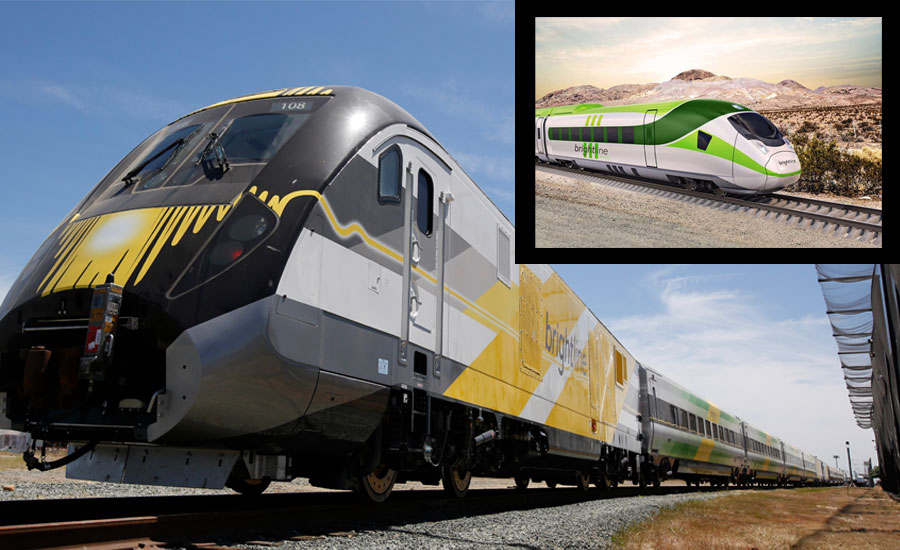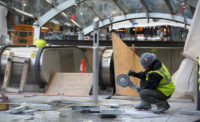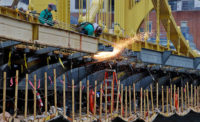Transportation in all its forms supports every aspect of American life, and has long defined U.S. engineering and construction ingenuity.
Yet for too long, we have had to envy Europe and Asia transit development as their nations built safe, innovative and more cost-efficient systems. The new administration can return the U.S. to a leadership role in transit—not only to catch up with the rest of the world but also to assure that systems are more resilient to climate change and fulfill a national goal of economic equity.

With the COVID-19 pandemic, President Joe Biden wants to “Build Back Better” for a stronger economy, seeing a major infrastructure plan as the engine to drive the nation’s new priorities. Now is the time for a comprehensive national transportation mobility program led by a critical collaboration by planning, engineering and construction professionals and state, local and administration officials.
The American Public Transit Association has highlighted the need for $32 billion in emergency public-transit relief funding for public agencies that have continued to provide service despite significantly reduced ridership and revenue and dramatically higher operating and maintenance costs.
The president and Transportation Secretary Pete Buttigieg should enlist nonpartisan transportation professionals to create a formal peer review process for proposed projects; advise on design, construction, procurement and staffing approaches; and determine equitable distribution of funds across the U.S.
The Trump administration’s 2016 infrastructure “priority list” can be a starting point to identify projects, but the focus now must be on an immediate pandemic response that considers future climate-change impacts and social justice disparities.
New Priorities
President Biden’s executive order restoring the U.S. as a Paris Climate Accord signatory is one key move to slow climate-change effects. Reducing traffic congestion by investing in transit can further demonstrate the country’s commitment.
The Build Back Better initiative needs all communities represented, particularly those of color and those economically disadvantaged to help shape projects and systems. Our investments must also ensure more attention to system safety, targeted economic development and equal employment goals.

Experienced peer reviewers should advise DOT on priority projects from the long list of backlogged infrastructure work, focused on need and wise spending.
Projects such as the Hudson River tunnel replacement, which has languished due to political fears about its cost, should be restructured into a phased project. That was done for New York City’s Second Avenue Subway, which has allowed vital components to proceed with an initial reduced funding requirement.
This process should also encourage modern contracting practices to expedite projects. Internationally, the industry has fostered innovative public/private partnerships (P3) and Integrated Project Delivery (IPD) techniques to advance projects with speed and efficiency. Procurement and project management systems must reflect construction industry best practices to keep priority work on time and on budget.
The key to success will be to identify shovel-worthy projects using a transparent approach that keeps the process on a firm track but still provides all sides with confidence in the need. Peer reviews should independently evaluate an owner’s project cost estimate and schedule based on real-world experience, local factors and assurance these will be maintained throughout the work.

Construction of the Interstate Highway System shaped America for the last 70 years. The 2020s and beyond should be the era of modern high-speed rail and improved mass transit..
Prior to 1945, the U.S. rail system was the best in the world. But disinvestment, growth of air travel and interstate highways made passenger railroads nearly extinct. It’s time to catch up to the rest of the globe and rebuild our national network and the regional mass transit systems that feed into it.
Projects such as the southern California-Las Vegas XpressWest, now called Brightline West. and the Florida Brightline East, both with significant private financing, should be supported to bring high-speed regional rail to the U.S. Modern high-speed rail can provide safe, comfortable travel with less pollution than air or auto travel, and often faster and less expensive than other modes. Additionally, local projects long under study, such as the Brooklyn-Queens Connector streetcar in New York City can advance under the new program..
A Biden administration push for a pandemic relief program focused on developing rail infrastructure at a reasonable cost that keeps us safe and builds sustainable employment, a climate-resilient network and a stronger, fairer economy will make Build Back Better more than just a snappy campaign slogan.
President Biden and Secretary Buttigieg should tap engineering and construction experience and vision for the guidance now needed to ensure that this program—and America’s economic recovery—can both succeed.
Contact Mysore Nagaraja, former MTA Capital Construction president, at consultmysore@gmail.com; Howard Sackel, former NY-NJ Port Authority ARC Tunnel project director at sackcongrp@aol.com; and Robert W. Previdi, former NYC Transit spokesman, at robertwprevidi@gmail.com.



.jpg?height=200&t=1640294268&width=200)

Post a comment to this article
Report Abusive Comment